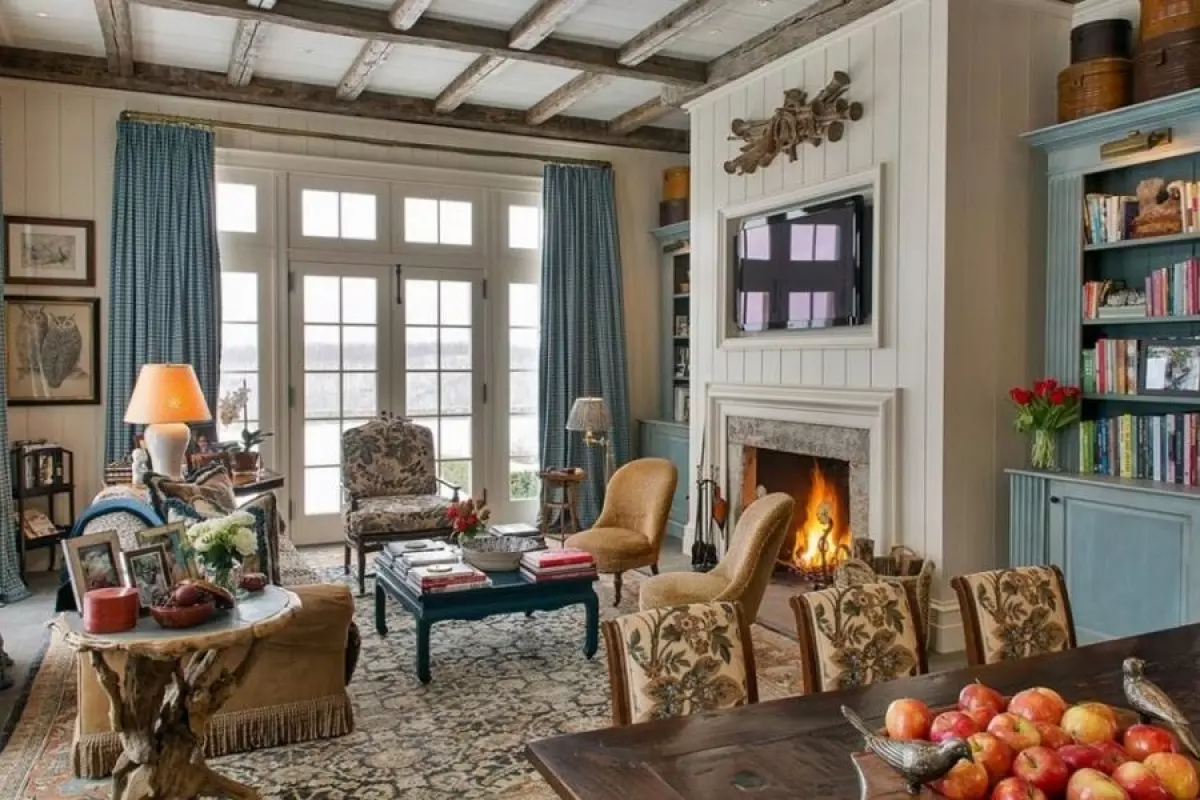 Cozy ethnic living room in light colors
Cozy ethnic living room in light colors
Embracing the History of German Style
The German interior design style has deep roots that trace back to the Biedermeier era, which emerged in the mid-19th century as a replacement for the fading Empire style. Biedermeier retained some elements of its predecessor but added troubadour influences and Gothic details. However, it wasn't until the architect Walter Gropius and his school, "Bauhaus," came along that a modern, minimalist, and practical direction was established. The German style embodies the essence of modernity, minimalism, and constructivism, while still maintaining a few distinct national characteristics. Although the style can be found throughout Europe, it is rarely seen in its pure form outside of Germany. The German style is considered a sophisticated option, often combining elements of ethnicity and minimalism.
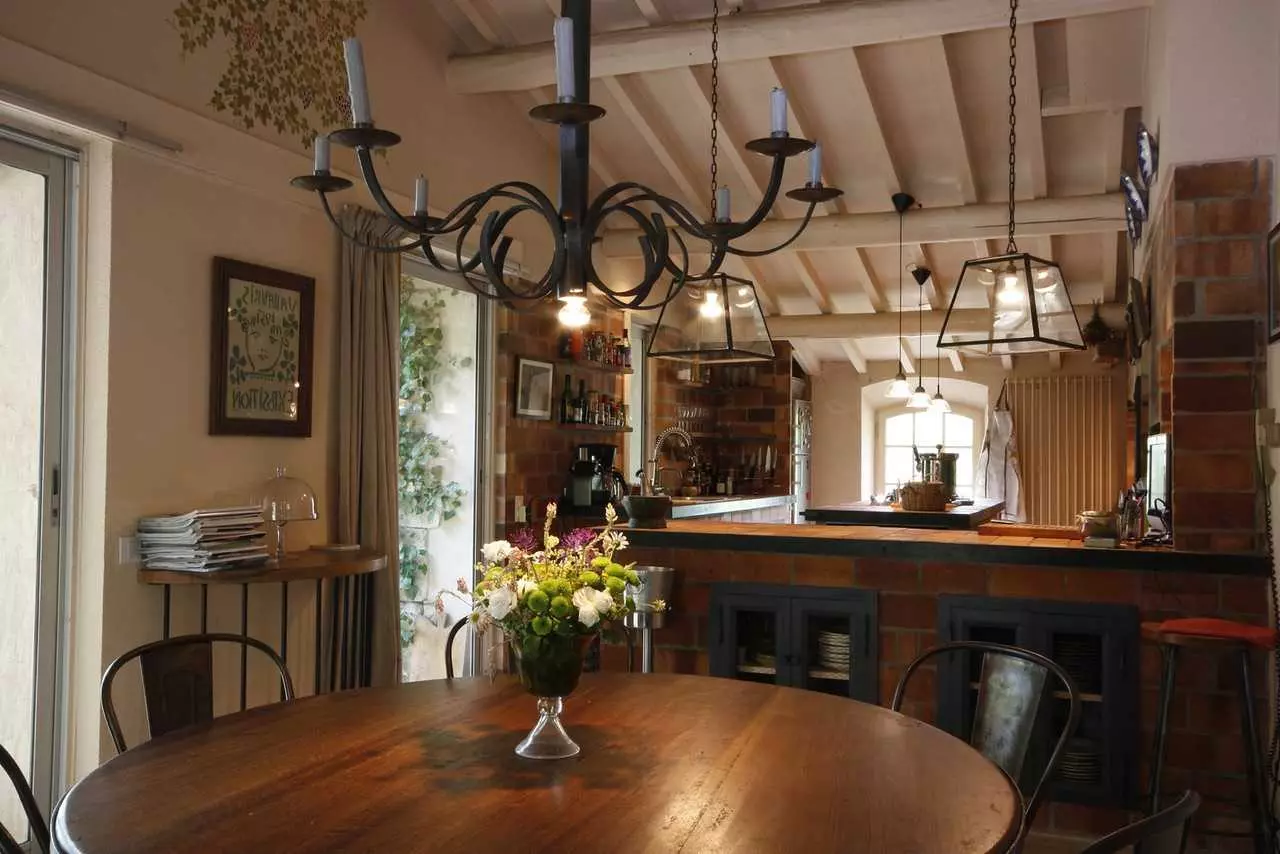

Characteristic Features and Peculiarities
The German style is known for its well-balanced blend of functionality and comfort, creating a harmonious and cozy environment. Furniture is arranged strategically to ensure ease of movement, with convenience taking priority over aesthetics. The color palette is calm, inspired by classic interiors and rooted in neutral tones, such as shades of white and brown. Decorative elements are used sparingly, combining angular shapes with soft curves. A standout feature is the presence of podiums and ledge-like designs on the ceilings. Floral motifs and contrasting stripes are often seen in upholstery and textiles.
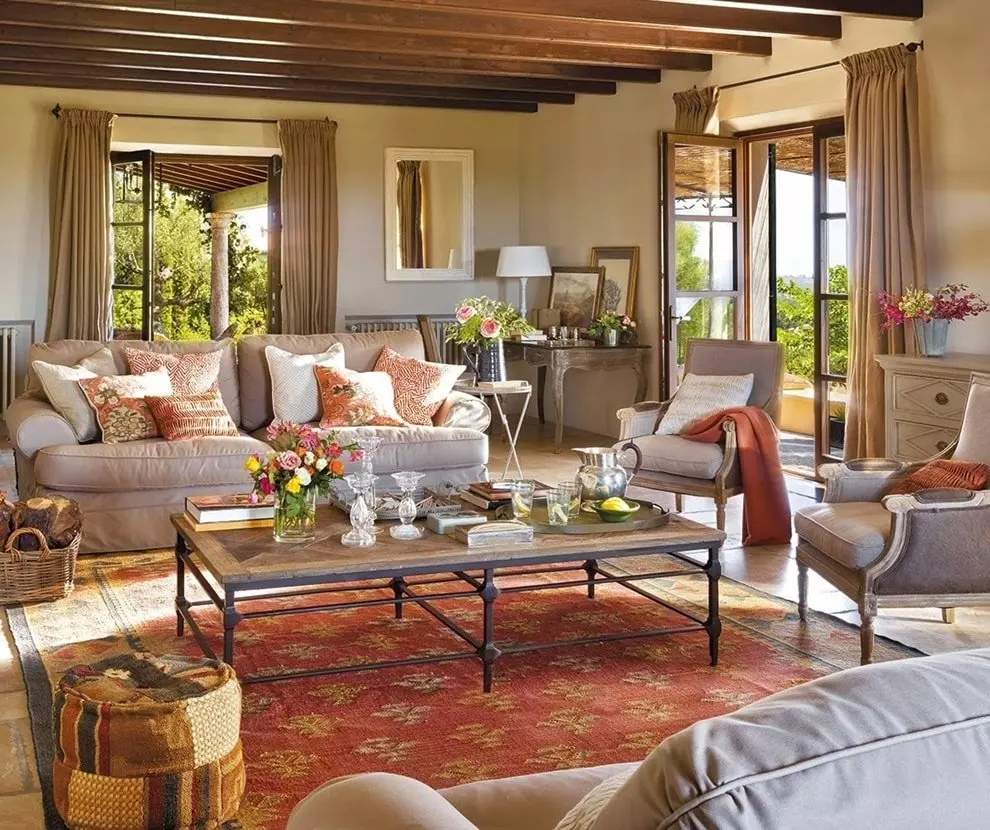
In modern German interiors, suspended furniture structures, such as beds and cabinets, are common. These structures provide a sense of airiness, replacing traditional podiums. The combination of functionality and minimalism is a key characteristic of German design, allowing for comfortable and practical living spaces.
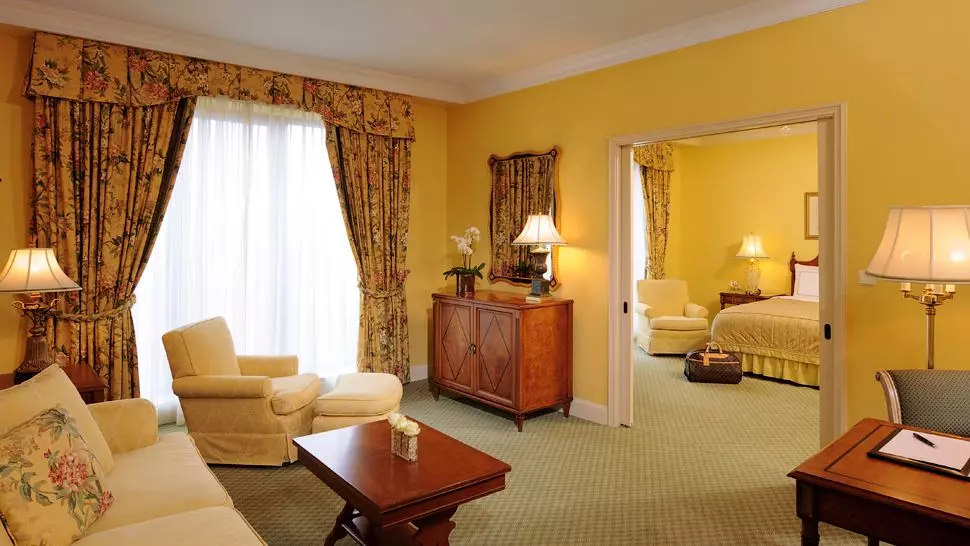
Materials Used for Finishing
Ceilings in German interiors are typically finished with simple, non-textured plaster. In modern variations, matte stretch fabric may be used. Classic German interiors often feature decorative wooden beams on the ceilings, reminiscent of Bavarian houses. Walls can be painted, wallpapered, or covered in plaster. The surface can be monochromatic in muted shades or adorned with discreet vegetal patterns. Accent walls may incorporate stripes or geometric designs. The flooring is traditionally made of hardwood, but modern alternatives like laminate, parquet, or tiles are also used.

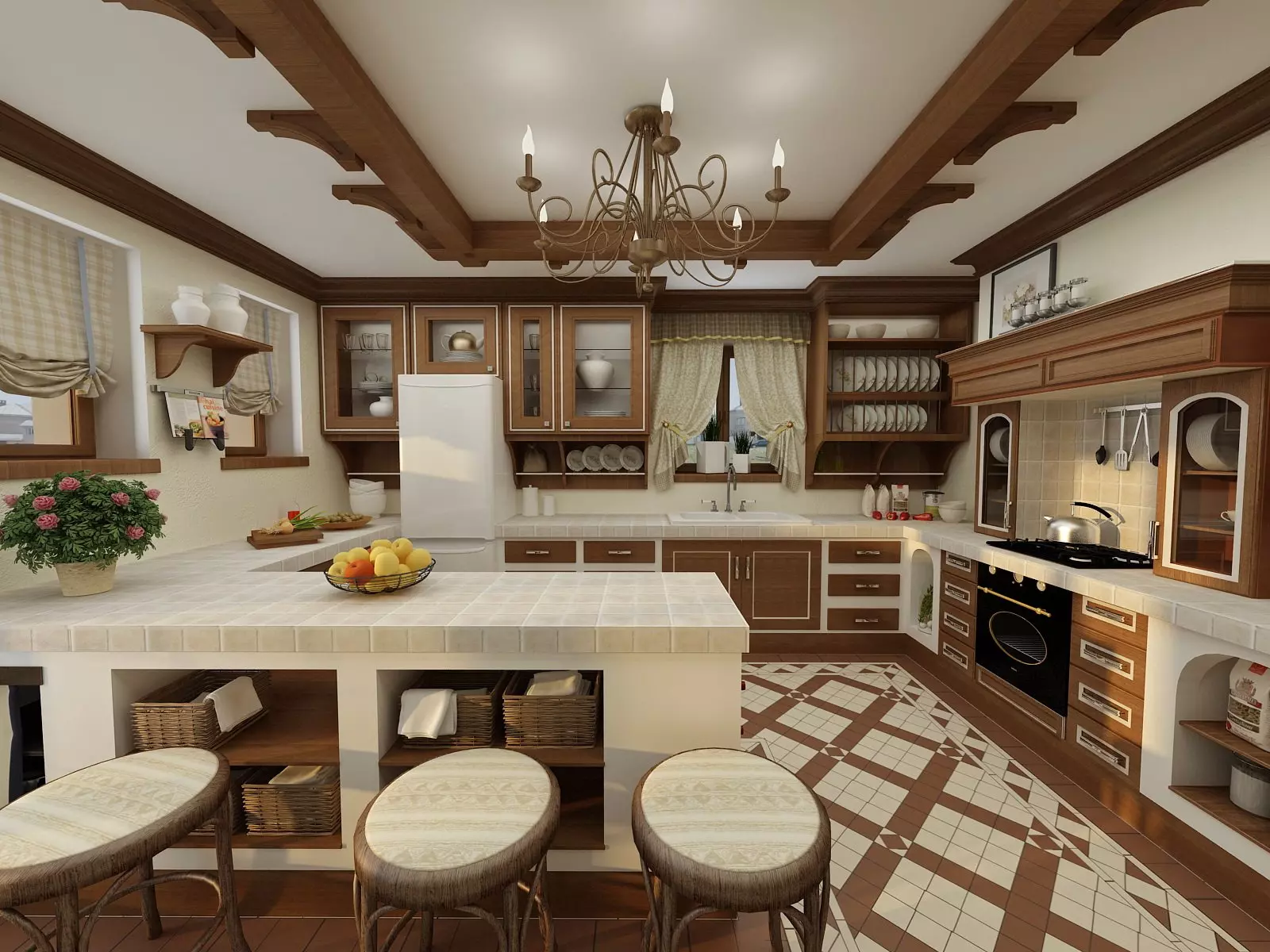
A Calm and Balanced Color Palette
The German style is characterized by a sophisticated color palette, often inspired by nature. With wooden surfaces playing a significant role in the decor, it's no surprise that shades of white and brown dominate. Dark chocolate, nut, terracotta, and vanilla hues are commonly used, complemented by occasional accents of blue, purple, or yellow. Contrasting combinations of black and gray can also be found.
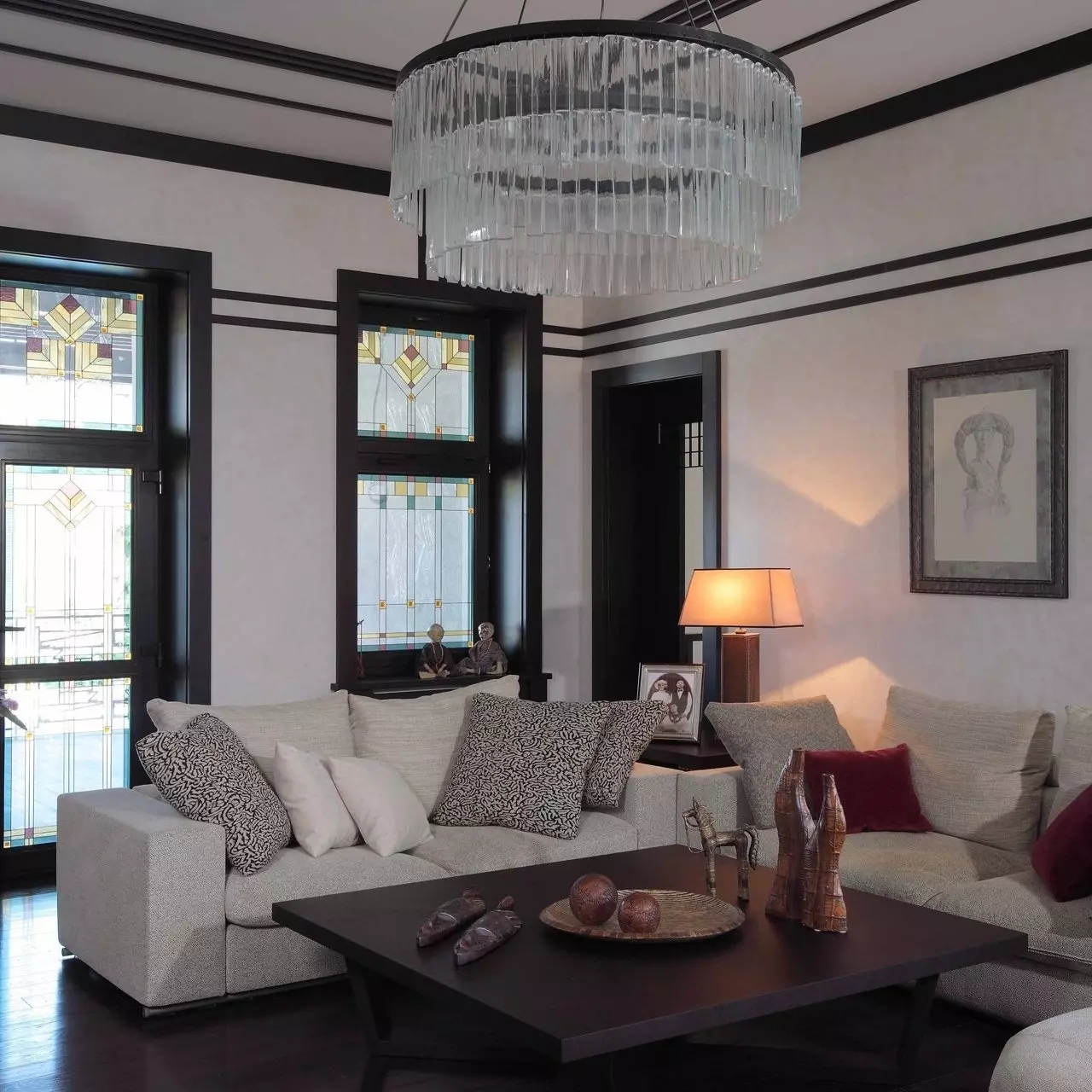
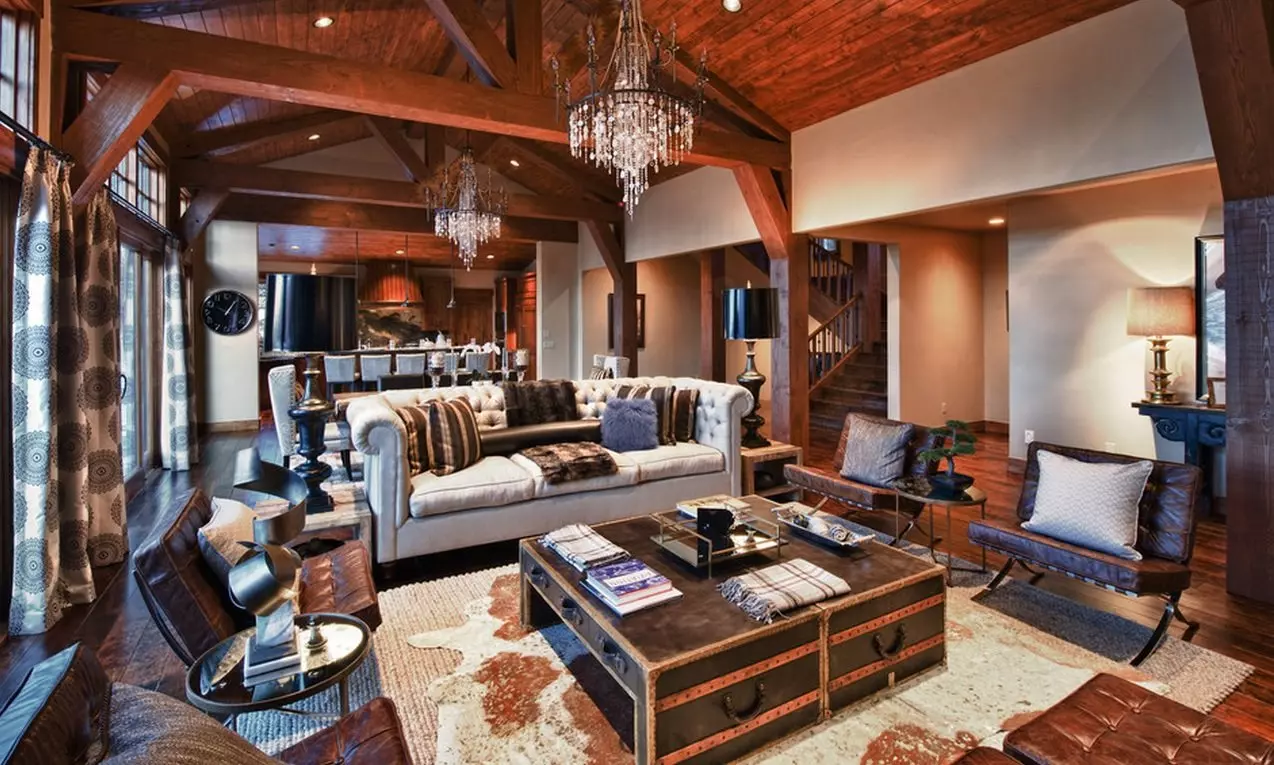
Choosing Furniture with Functionality in Mind
Functionality is the key when selecting furniture for a German-style interior. Proportions and comfort take precedence over aesthetics. Classic German interiors often feature comfortable armchairs, soft sofas, small dressers, bedside tables, shelves, and coffee tables with thin legs. The furniture facades are simple and smooth, with minimal decorations and handles. Angular shapes are softened by the gentle curves of smaller elements. For instance, a rectangular mahogany table in the kitchen can be paired with chairs featuring semicircular seats and carved backs.

"In small or cramped combined rooms, folding furniture is allowed, as comfort is paramount in German interiors."

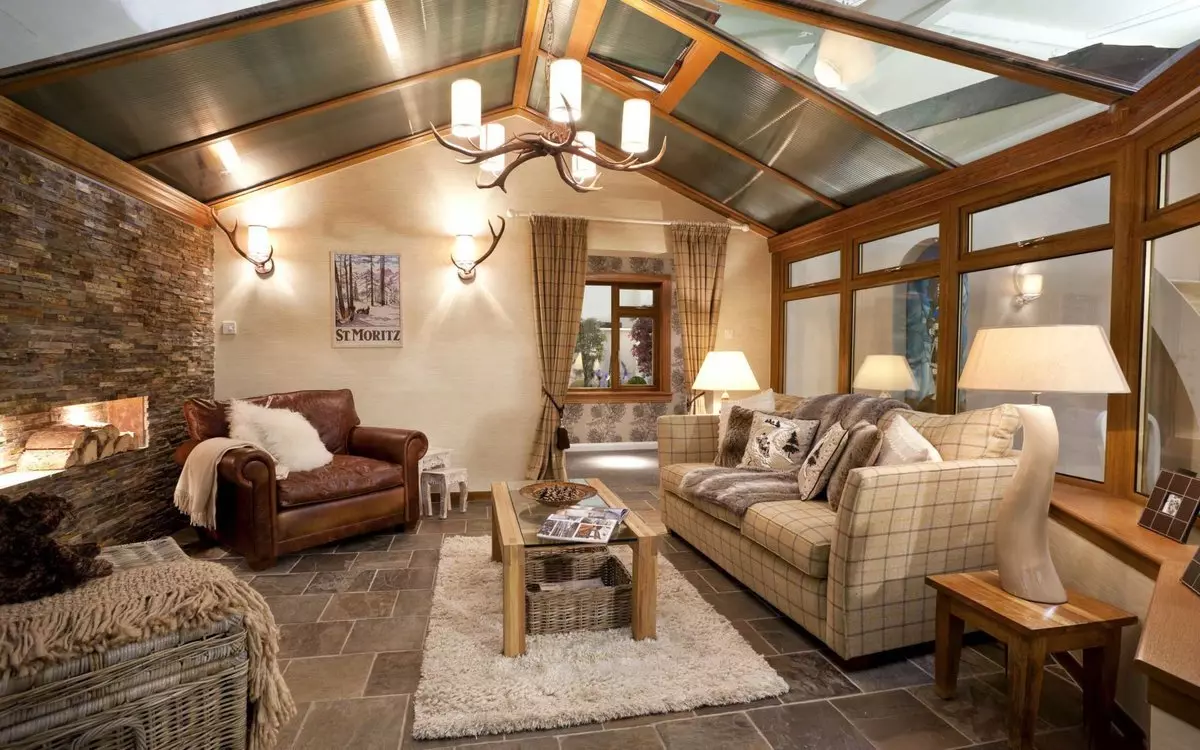
Illuminating the Space
Rectangular windows serve as the primary source of natural light in German interiors. Curtains, usually without tulle, are only closed at night. A simple and understated ceiling chandelier provides the central lighting. Additional "working" light sources, such as lamps and sconces with glass shades, are strategically placed around the perimeter. In spaces with podiums or hanging furniture, decorative lighting is used to highlight these features.

German interiors often incorporate numerous small lighting fixtures, each adorned with simple frames. These fixtures are strategically placed where additional lighting is needed, such as reading corners, tables, or mirrors.

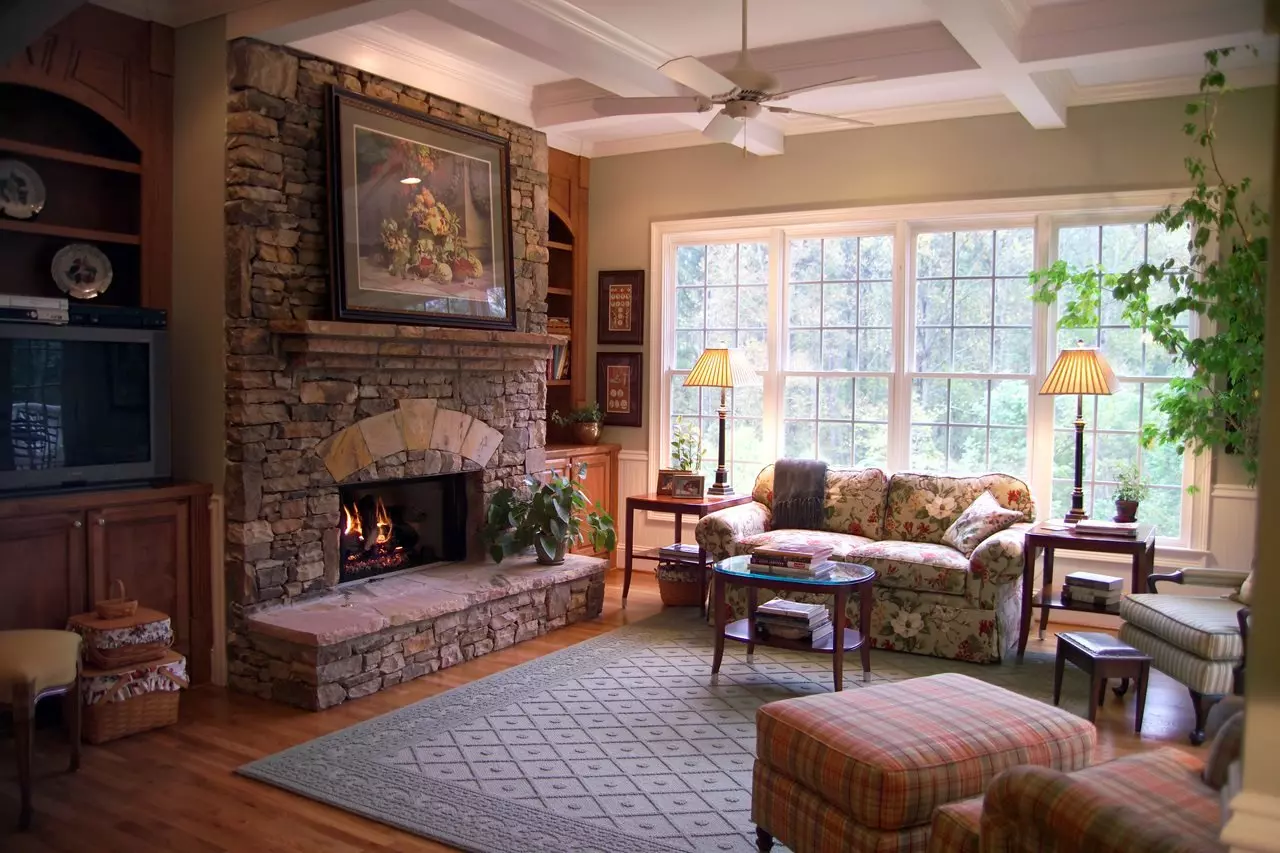
Textiles, Decor, and Accessories
German-style decor is characterized by its simplicity and understatement. Flowers and botanical elements are commonly used in vases and pots. A bouquet of fresh roses or chrysanthemums can adorn the bedroom, while a couple of pots or elongated vases with dry branches can enhance the living room. Miniature pots with indoor plants can be placed in the kitchen. Groupings of vases, varying in shape, size, and glass color, are a distinctive feature.
Wall decorations often include a couple of paintings with neutral themes, sconces, and a clock. Natural fabrics dominate in textiles, with dense materials commonly used for furniture upholstery. For a touch of luxury, chairs with velvet or velour seats can be incorporated. Windows are adorned with solid, floor-to-ceiling curtains. A composition of two-tone pillows on the sofa or bed adds an element of visual interest.
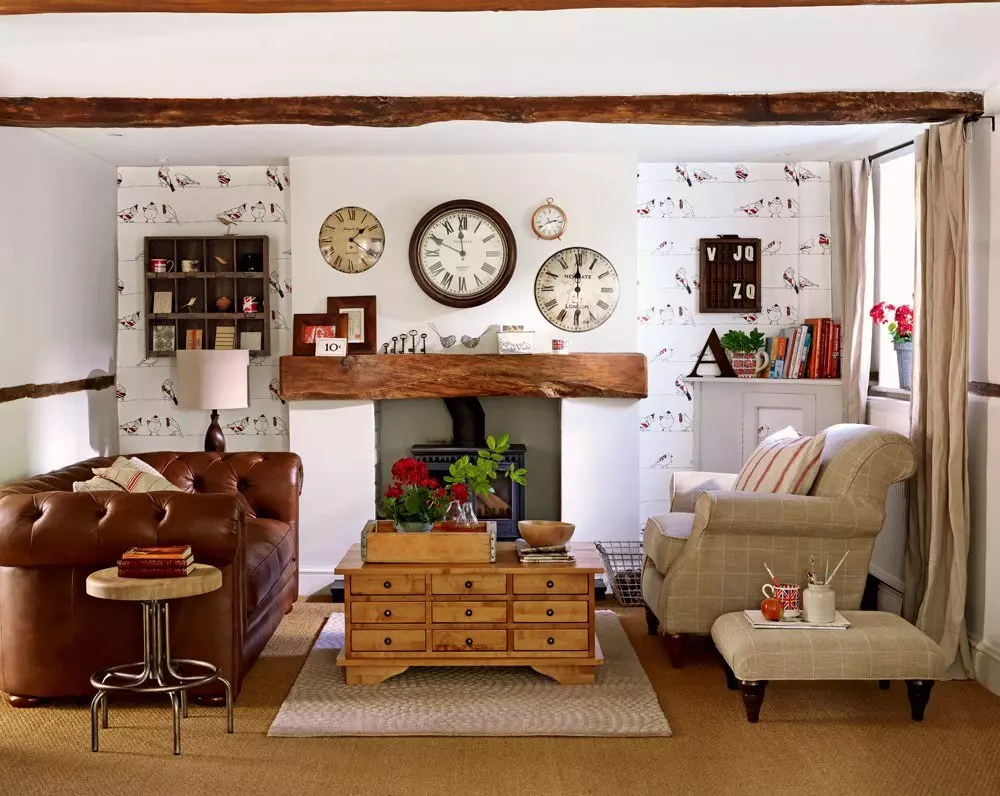
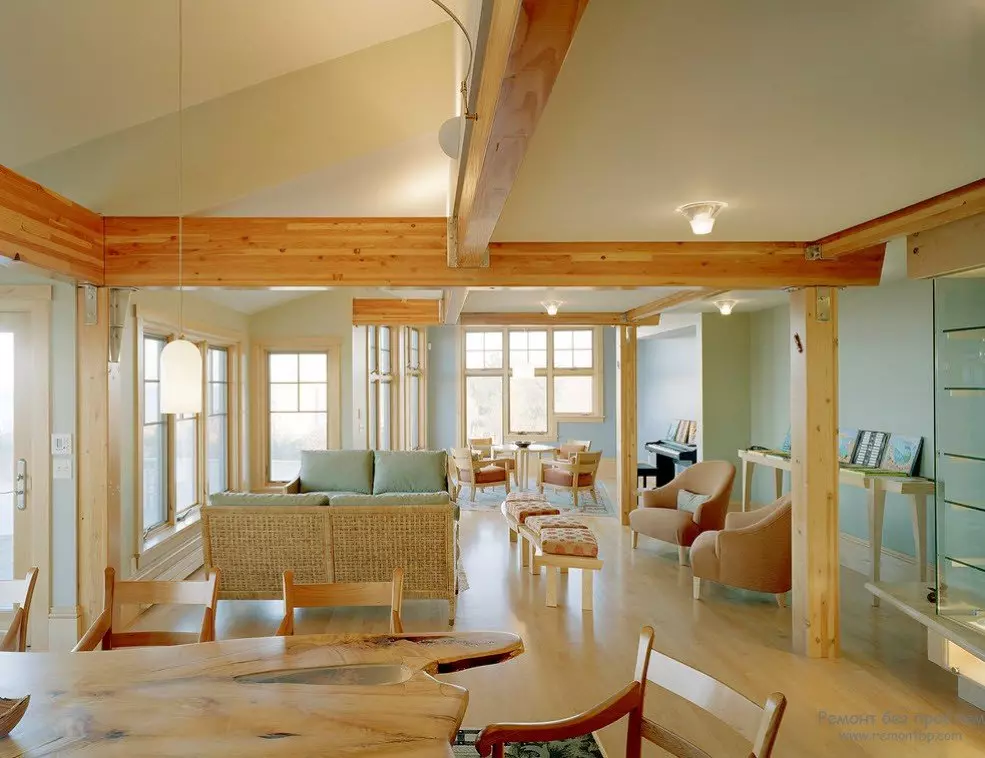
Interior Examples
The modern German style embodies the essence of minimalism, which can be combined with other styles such as modern, art deco, or loft. Each room can showcase the German style in its own unique way, with different color schemes and accent decor. Let's explore some examples that illustrate how these rooms can be designed.

Kitchen
A German-style kitchen often combines a cooking area with a dining space. If the room allows, the dining table can be positioned next to the furniture set, serving as an additional work surface when needed. Hanging structures with bulbs and hooks can be added above the countertop for conveniently storing small kitchen utensils. To maximize storage space, opt for a comfortable sideboard dining table with closed shelves. The tabletop's slightly protruding edges provide a comfortable dining experience, while drawers underneath offer additional storage. Light wood is suitable for smaller kitchens, while dark chocolate tones work well in larger spaces. For a touch of elegance, consider replacing some of the drawers with wicker baskets, providing storage for non-perishable items. Large ceramic tiles are commonly used for the kitchen floor, available in white or with surfaces that imitate marble or wood. Wall finishes can include plain vinyl wallpaper or moisture-resistant plaster designed for wet areas. Decorative items, such as plates on stands, fruit compositions, and fresh flower bouquets, can further enhance the style of the room.
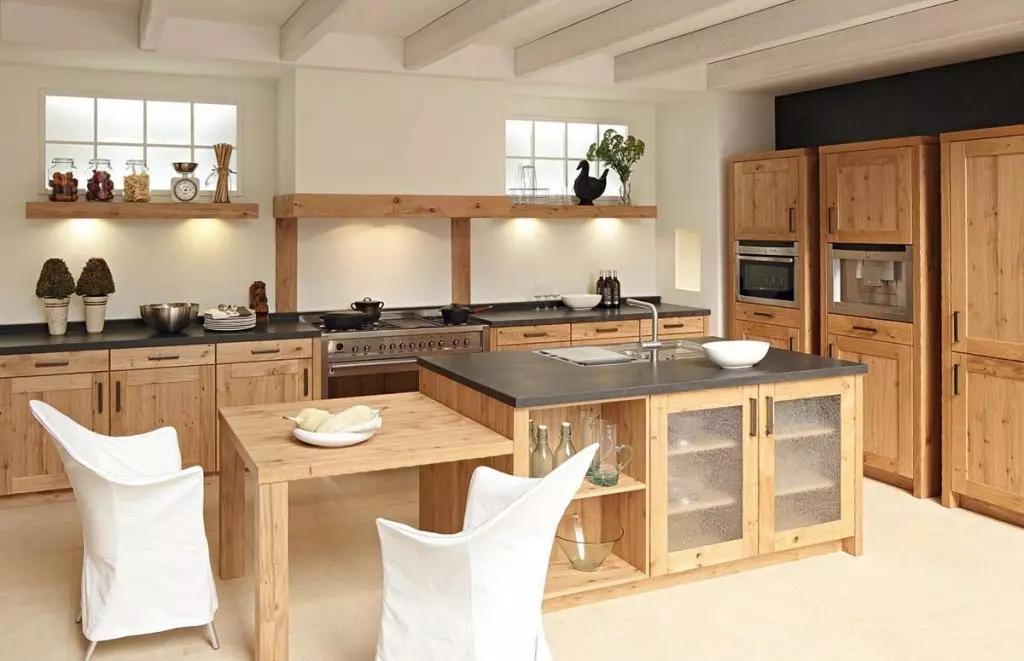
Living Room
German-style living rooms adhere to the principles of minimalism. Opt for a wide sofa with soft brown leather upholstery and position a coffee table nearby. The table's foldable "wings" can be extended when needed. Place a short-pile rug in a dark chocolate shade with sporadic white splashes underneath the coffee table. A narrow hanging cabinet next to the wall opposite the sofa can serve as a TV stand and storage space. To prevent the area from feeling empty, hang a couple of open wooden shelves on either side, displaying books. Two-tone curtains add a touch of elegance to the windows. If space allows, a fireplace near one of the walls can be a great addition. In modern interiors, portable bio-models or electric fireplaces are viable options. Decorate a "full-fledged" fireplace with light-colored artificial brick. The room's decor is often limited to a wall clock, one or two paintings, pots with indoor plants, and a round crystal chandelier. Add a pair of lamps to each zone for additional lighting.
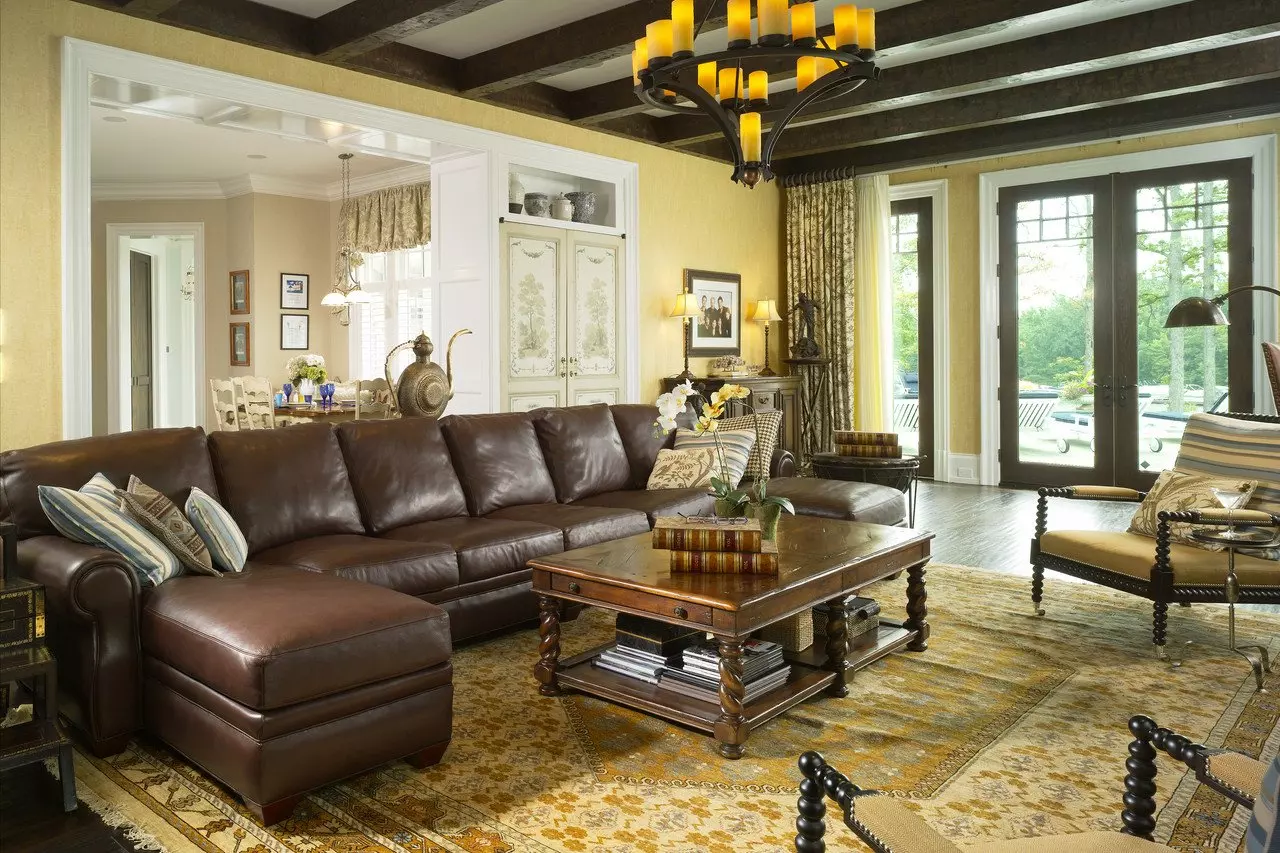
Bedroom
The bedroom in a German-style interior showcases a gray wood beam ceiling, creating a contrasting effect against the white plaster walls. Choose a bed made of wood or metal with wrought-iron details. Use a checked or striped bedspread to cover the bed, accompanied by a pair of pillows with identical patterns in different colors. Thick, heavy curtains in pastel shades provide privacy for the windows. Decorate one of the walls, preferably the headboard area, with boards arranged in a deck-like pattern. No additional decorations are needed, as the textured wall serves as the focal point. Place bedside tables with ebony finishes and high, thin legs on both sides of the bed. Each table can feature a lamp with a simple fabric shade. Hang a mobile mirror without a frame on the wall instead of the traditional wall-mounted mirror. Pair it with wall sconces to accentuate the textured wall. The floor can be covered with a short-pile rug in a light baked milk shade. Complement the overall composition with a floor vase filled with dry twigs or a large pot containing an indoor plant.

Hallway and Corridor
For the hallway, a furniture set comprising a wardrobe, hanger, and bench is an ideal choice. Wood, preferably in light shades, is commonly used for furniture in smaller spaces. A short-pile rug in a convenient size is placed on the floor for easy maintenance. One of the walls can be adorned with a rectangular mirror in a simple wooden frame or left frameless, with sconces hung on either side. For wider hallways, a cabinet with drawers for storing small items can be placed beneath the mirror. Furniture facades are simple and smooth, without excessive decorations. Decorative elements can include groups of vases of different sizes and shapes, as well as cardboard boxes with hinged lids.

Bathroom and WC
In German-style bathrooms, large ceramic tiles are the go-to choice for the floor. However, instead of traditional pastel shades, opt for tiles that mimic the texture of wood. Use different shades of the same color with slight variations to avoid a monotonous look. The upper part of the walls can be finished with plain white tiles. Furniture, including a narrow cabinet and a sink cabinet, is often selected in white or gray to create an illusion of spaciousness. A square, rimless mirror with glass sconces adds the perfect touch. Decor in the bathroom is kept minimal, with an elongated vase featuring fresh flowers placed on a shelf. A simple white or gray rug can be placed on the floor. In combined bathrooms, consider using suspended toilet bowls. Frosted glass partitions without patterns can be used to separate the toilet area from the rest of the room.
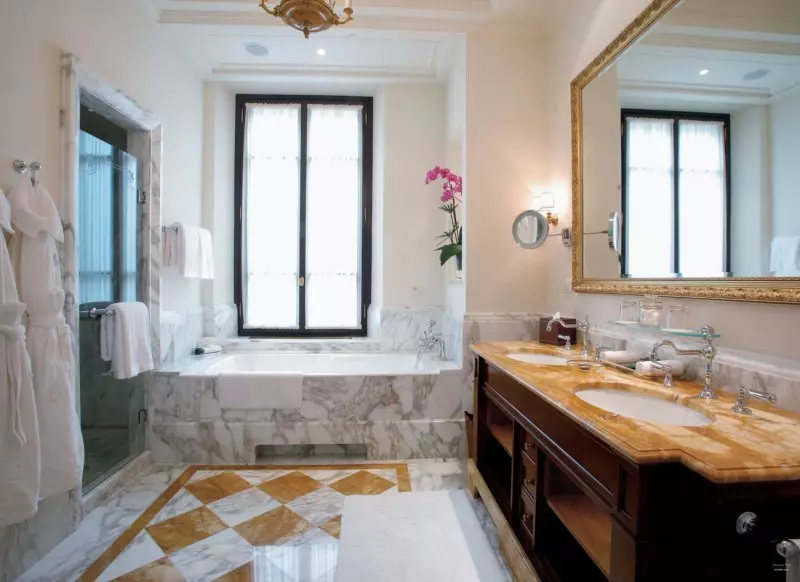
In Conclusion
The German interior design style attracts those who appreciate natural and simplistic beauty. Designers find joy in creating such interiors, which are versatile and easily adaptable to both spacious rooms and compact spaces. It's important to note that German-style design tends to be more expensive due to its focus on quality and natural materials. Furthermore, a basic understanding of floristry is beneficial, as live plants are considered essential elements in every room of a German-style interior.












